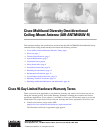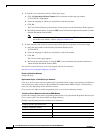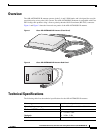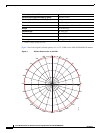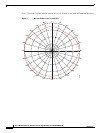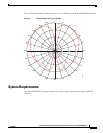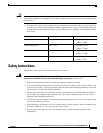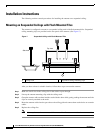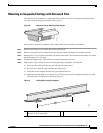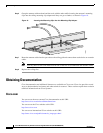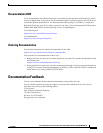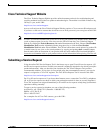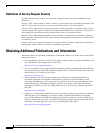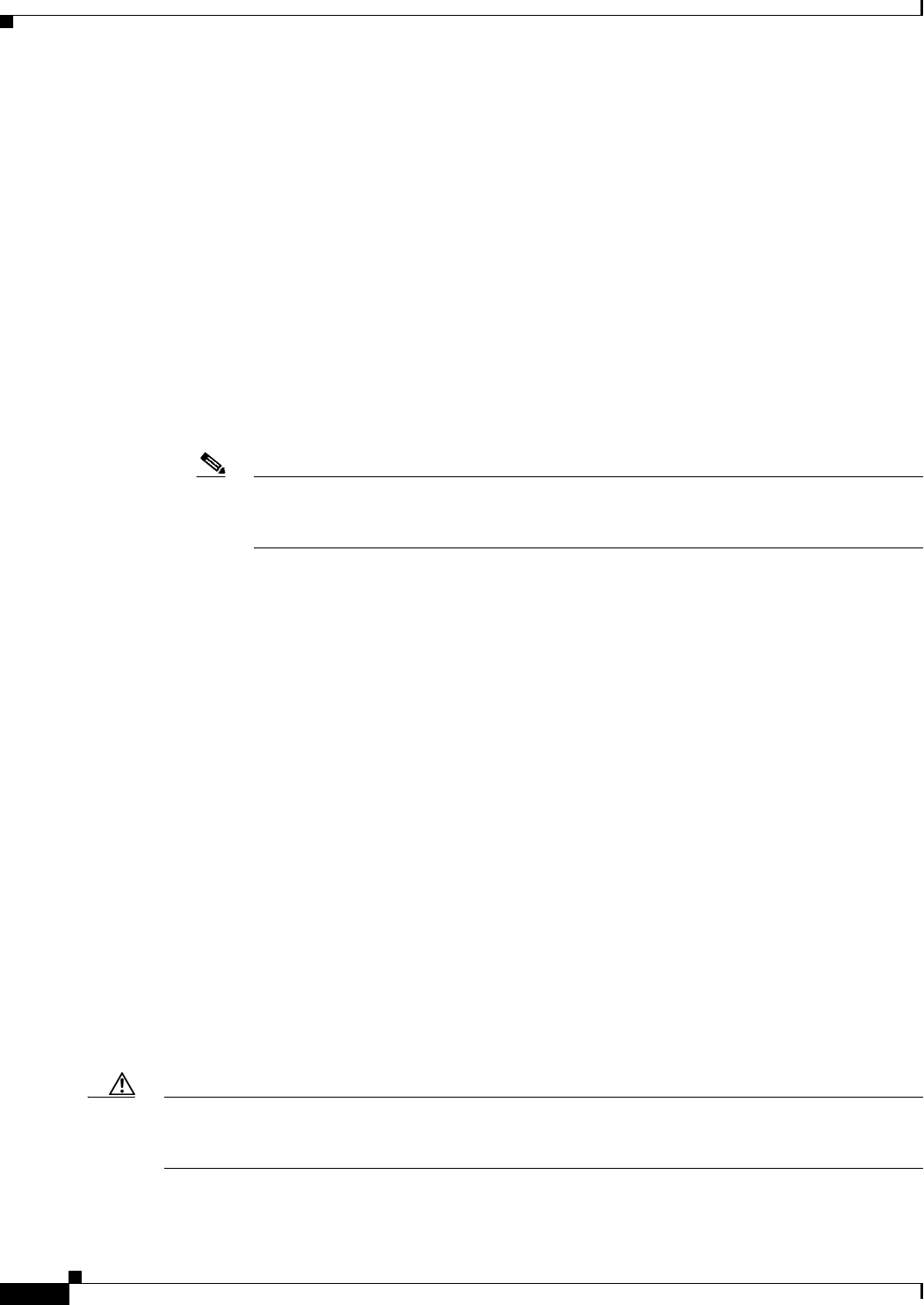
8
Cisco Multiband Diversity Omnidirectional Ceiling-Mount Antenna (AIR-ANTM4050V-R)
OL-6485-01
Installation Notes
Installation Notes
This antenna is designed to be mounted indoors on a suspended ceiling track having either flush or
recessed mounted ceiling tiles.
In addition to antenna orientation, wireless access point installation location with respect to all wireless
clients plays a significant role in determining overall network performance. Clients at the furthest
coverage points might have 10% to 50% of the bandwidth of clients close to it. Wireless network
coverage in one area or location might need to be lowered to improve the performance of other clients.
Because antennas transmit and receive radio signals, their performance can be adversely affected by the
surrounding environment including distance between access point and client, physical obstructions, or
radio frequency (RF) interference.
Follow these guidelines to ensure the best possible performance:
• Mount the antenna to use its propagation characteristics. For best results, mount the antenna
horizontally at ceiling level near the center of the coverage area.
Note The antenna must be mounted horizontally in order to maximize its omnidirectional
propagation characteristics. Mounting it vertically may noticeably decrease the antenna
range and overall performance.
• Wherever possible, mount the AP HWIC and antenna where the wireless devices would be within
sight and avoid physical obstructions. Barriers along the line of sight between client and access point
will degrade the wireless radio signals. AP HWICs and antennas can be installed above floor level
in office environments or near the ceiling for better performance since most obstructions tend to be
near floor level.
• The density of the materials used in a building's construction determines the number of walls the
signal must pass through and still maintain adequate coverage. Consider the following before
choosing the location to install your antenna:
–
Paper and vinyl walls have very little effect on signal penetration.
–
Solid and precast concrete walls limit signal penetration to one or two walls without degrading
coverage.
–
Concrete and wood block walls limit signal penetration to three or four walls.
–
A signal can penetrate five or six walls constructed of drywall or wood.
–
A thick metal wall or wire-mesh stucco walls causes signals to reflect back and cause poor
penetration.
• Avoid mounting the antenna next to a column or vertical support that could create a shadow zone
and reduce the coverage area.
• Keep the antenna away from reflective metal objects such as heating and air-conditioning ducts,
large ceiling trusses, building superstructures, and major power cabling runs. If necessary, use an
extension cable to relocate the antenna away from these obstructions.
Caution Install the AP HWIC and any antennas away from appliances that share the same frequency bands.
Microwave ovens, cordless telephones, and security monitors can temporarily interfere with wireless
performance.



